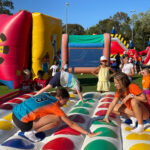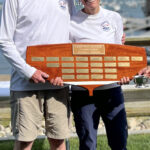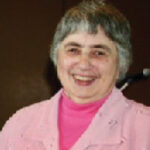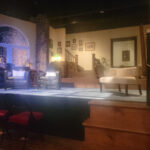In the quiet corners of Wayland, beneath the shade of ancient trees and among the moss-covered stones, lie open secrets — etched in granite, marble, and slate. Our cemeteries are more than resting places; they are the first communal art forms, public galleries of remembrance, identity, and history.
Art, memory and message
For families who could afford them, gravestones were a way to honor loved ones and subtly display status. Large markers often signaled wealth or prominence, while carvings reflected artistic trends of the time. Religious symbols declared faith, military insignias honored service, and for children, a stone might be the only proof they lived and were cherished.
When paper records failed — lost, destroyed or never created — stone remained. These markers may reveal names, dates, relationships, affiliations, occupations and even hobbies. They whisper stories of epidemics, wars, shipwrecks, and generational roots. A cenotaph might mark a life lost at sea; a cluster of dates might hint at tragedy. Each stone is a question and an answer.
The fragility of stone
Despite their strength, gravestones are vulnerable. Early markers of fieldstone gave way to slate, marble and granite, but these materials also have weaknesses. Freeze-thaw cycles destabilize stones. Slate can flake or rust from within. Marble and limestone suffer from “sugar decay,” which melts the soft stone away, erasing inscriptions.
Biological threats such as lichens, moss, vines and bird droppings erode surfaces. Soil shifts, tree roots, and falling limbs wreak havoc. Trees have been known to swallow entire markers. Human activity also contributes to the damage: lawnmowers, weed whackers, vandalism and misguided repairs, such as using concrete or iron bands and bolts exacerbate the problems. Even fertilizers and herbicides may degrade these historic markers.
Recognizing these threats, Mary C. Reed of the Wayland Historical Commission initiated a survey in 1998 with Fannin.Lehner Preservation Consultants of Concord. Their four-volume review confirmed long-standing concerns. The Historical Commission then had cultural resource consultant and historical archaeologist Barbara Donohue develop a preservation management plan for North Cemetery. Ground-penetrating radar revealed unmarked graves, lost walkways and vestiges of former meeting houses. The action plan included measures to correct the years of deferred maintenance from previous centuries.
Today, Epoch Preservation of Ipswich is contracted by the Historical Commission to conserve North, South, and — for the first time — Lakeview Cemetery. Experts recommend conservation every 5–10 years to protect these irreplaceable cultural assets.
The Historical Commission wanted to learn more about the artists behind the stones. Nationally known gravestone carver expert Laurel K. Gabel examined North Wayland’s stones. Surprisingly, families often commissioned artists from outside the area. James Foster Sr. and Jr. of Dorchester crafted winged skull motifs. Daniel Hastings of Newton signed his markers. His brother-in-law, Ebenezer Howard, was also a skilled carver.
The Lamson family of Malden and Charlestown left their mark with elegant memorials. William Park of Groton brought Scottish flair with intricate, flatly carved Darth Vader-like skulls, flat scrolls and architectural details with stippling or diamond cut patterns in the background, but later incorporated ornate vines and banners. He was known for broad faces with narrowed, short chins; scant, close-capped hair; slightly crossed, staring eyes; and a decidedly bulbous nose. His sons, John and Thomas, continued the tradition with urns, ribbons and lifelike portraits. Moses Worcester of Harvard evolved from primitive masks to a youthful winged face; however, for children, he carved a wingless head in a circle.
Puritans once frowned upon graven images, but attitudes shifted. Ann Goodenow’s 1675 “wolf stone” is an example of early fieldstone used to deter animals. By the 18th century, stones stood upright, shaped like pillared arched doorways to the next life. Death emblems were portrayed as winged hourglasses and grim-faced death angels. Symbols grew more elaborate and hopeful: vine of God, geometric rosettes, a willow tree, finials, and even more stylish by having a wig carved upon a portrait face.
After the Revolution, folk art gave way to mass-produced white marble. Yet, the meaning behind these nearly 400-year-old symbols continues to inspire curiosity and reverence.
Wayland’s cemeteries are not just places of mourning — they are archives of art, culture, and community. They deserve our attention, care, and respect. As we walk among the stones, we walk among stories waiting to be heard. Let’s keep listening.
Future programs
Thursday, Oct. 9 at 7 p.m. — Presentation by historian Dennis Picard exploring the art and symbolism found on early gravestones in Wayland. Registration required through the Wayland Public Library.
Save the date: Sunday, April 12, 2026 — Guided tour of the North Cemetery to learn about the lives of Revolutionary War soldiers and their families. A journey into the lives and legacies of Wayland’s early patriots.















